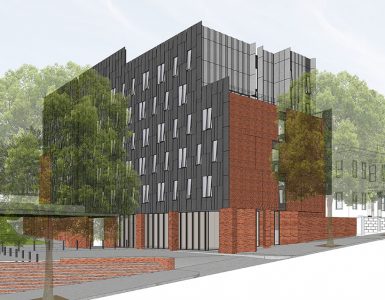Mayor Angel Taveras and Rhode Island School of Design President John Maeda announced today that RISD will more than double its annual payments to the City of Providence. RISD will contribute $2.75 million over 11 years, in addition to payments the prestigious arts school is already making under the terms of a separate 2003 memorandum of understanding, which is not affected by the new agreement. To date, the Taveras Administration has secured more than $44 million in additional contributions from six of the City’s largest educational and health-related tax-exempt institutions.




This looks like a positive for the city, but it isn’t. The city doesn’t want to control its spending and will continue to pile on the short and long term debt. It has already spent this new money from RISD.
Taxes will remain prohibitively high for businesses and residents and the city will remain in an intolerable high-tax no-growth mode. Assuming the city doesn’t file for bankruptcy.
In this environment, only the tax-exempts benefit (because they can avoid the city’s crazy-high taxes). The legislature should narrow the scope of the non-profits’ tax exemptions and otherwise require the state and the cities to reduce their spending and taxes.
For example, notice how on College Hill, even the multi-billion dollar Gilbane company claims it cannot make a profit on its Thayer Street apartment building project without a tax “stabilization” (reduction) agreement, because the city’s taxes are so high. Reflect on that fact. Non-insider taxpayers don’t get those agreements. The canaries in the city’s coal mines moved away or passed away long ago.
Ted Nesi reports for WPRI:
RISD and Brown should probably find a 12-step program to deal with their parking addictions. Also, the City ought not be such an enabler.
Here is proof our city is run by bean counters with absolutely no vision or imagination. They might not even be human.
The Providence School Department has stripped away every last thing that might make kids want to pay attention in school or help teachers reach them. The only response so far to the hole their obsessively administered test scores are plunging into is to keep digging.
How many cities are home to a first tier Art School with so much to offer in kind to its city? Does anyone think to explore the possibility of RISD contributing guidance, resources, volunteers to restore art education in city schools? How about a model program of professional development? This would be worth a great deal more than 2.75 million. Priceless actually.
Idiots.
Andrew, as a RISD Alum whose children were/are educated in Providence’s public schools, I’ll take the money, thankyouverymuch.
This is not a knock on RISD; just being realistic. A RISD education is designed to be demanding and fairly insular. It’s not one in which it would be easy or practical for students to become involved in the community in any organized and ongoing way. One would have to assume that RISD educators and administrators have determined this is what’s best for their students and their school’s reputation, otherwise we’d have seen community involvement on a regular basis organized by RISD before now.
Writing this, I’m remembering an effort spearheaded years ago by one RISD student, wherein she and some of her fellow students would volunteer at Martin Luther King Elementary. Not surprisingly, it petered out pretty quickly. Again, not a put down of RISD, this young woman, or the other students. A RISD education is simply not set up to encourage the time needed for this kind of organized, community effort. Intentionally, one would have to think.
Barbara,
It looks like RISD is way ahead of you on this already
http://www.risdmuseum.org/education.aspx?id=15216
“The RISD Museum’s School-Visit Programs engage students in grades K–12 in object-based lessons, helping them develop visual-literacy skills and an appreciation for works of art.”
Yet many Providence schoolchildren never experience a field trip to the RISD museum. One visit every 3 – 4 years would not be too much.